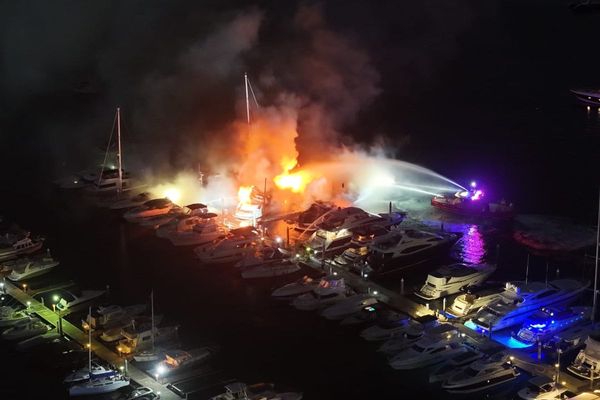
It is a rare and wonderful spectacle – and Tasmania’s Disappearing Tarn needs to stay just that, as park rangers warn swimming in its azure waters could land visitors with a $4,040 fine.
The famous but fleeting ephemeral pool appears for a few days only when rainwater levels in the foothills of kunanyi/Mount Wellington are high enough to fill a small gully in the rocky forest floor.
The 124mm of rain in the three days up to Tuesday have restored the tarn, its turquoise waters drawing hikers from the region to witness its short-lived beauty.
This stunning tarn has reappeared at #kunanyi/#MtWellington! A tarn is a lake that forms when a steep hollow fills with rain/ snow run-off. In the 3 days to Tuesday, 124mm of rain was reported on the mountain. The tarn will drain away after a few days, so be sure to check it out! pic.twitter.com/qHrj9NmCw8
— Bureau of Meteorology, Tasmania (@BOM_Tas) July 17, 2024
But those who go a step further and take a dip in the tarn can receive heavy fines for doing so.
On-the-spot fines for swimmers are $202. If the matter goes to court, magistrates have the power to issue fines of up to $4,040 per offence.
As tantalising as the cold waters may be, they are off-limits because they are within Hobart’s drinking water catchment area, Mount Wellington ranger Ben Masterman told the ABC.
“It’s always been no swimming in the drinking water catchment zone … we collect drinking water, so we don’t want people swimming, for sure,” he told local radio on Wednesday.
He said that many drinking water catchment areas are restricted even to walkers and that “once upon a time” no one was allowed in the kunanyi catchment area.
“We’re lucky we can walk off the track and go and visit the tarn, considering that it is in this sensitive environment – it’s just that we can’t swim in it and that has always been the case,” he said.
Drinking water from the catchment was very pure and pathogens such as E coli were a danger to the entire system, he said.
“If we look after the mountain, the mountain will look after us, and that applies to the environment generally – and drinking water is just the perfect simple example of that,” he said.
The no-swimming zone was marked with signs, he said.
He said while no on-the-spot fines for contravening the signs had so far been doled out, people could “theoretically” receive retrospective fines for swimming in the tarn if identified via social media posts.
The tarn is no stranger to Instagram and has become something of a “bucket-list item” for some hikers, some of whom take three or four attempts to find the remote spot.
It appeared in rainy 2018, then in June 2020, when cooped-up locals flocked to its waters for an illicit swim in the midst of Covid-19 travel restrictions.
A couple went missing while hunting for the tarn in 2021 and were found by search and rescue teams in the dark. The hikers later found out they would not have found the tarn as it hadn’t rained enough.
A Guardian Australia contributor who visited the tarn in 2021 said finding it was “was like tripping into paradise”.







